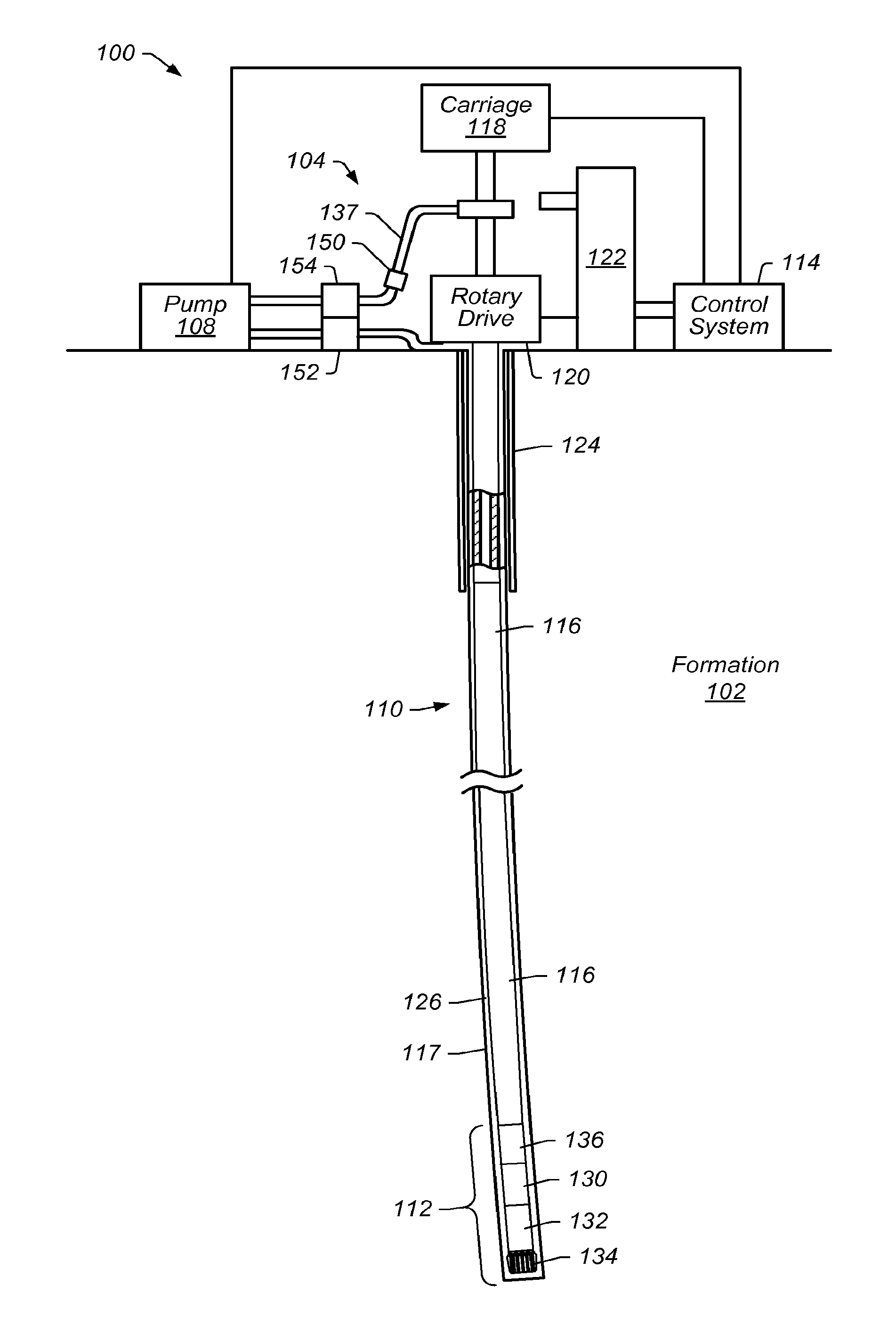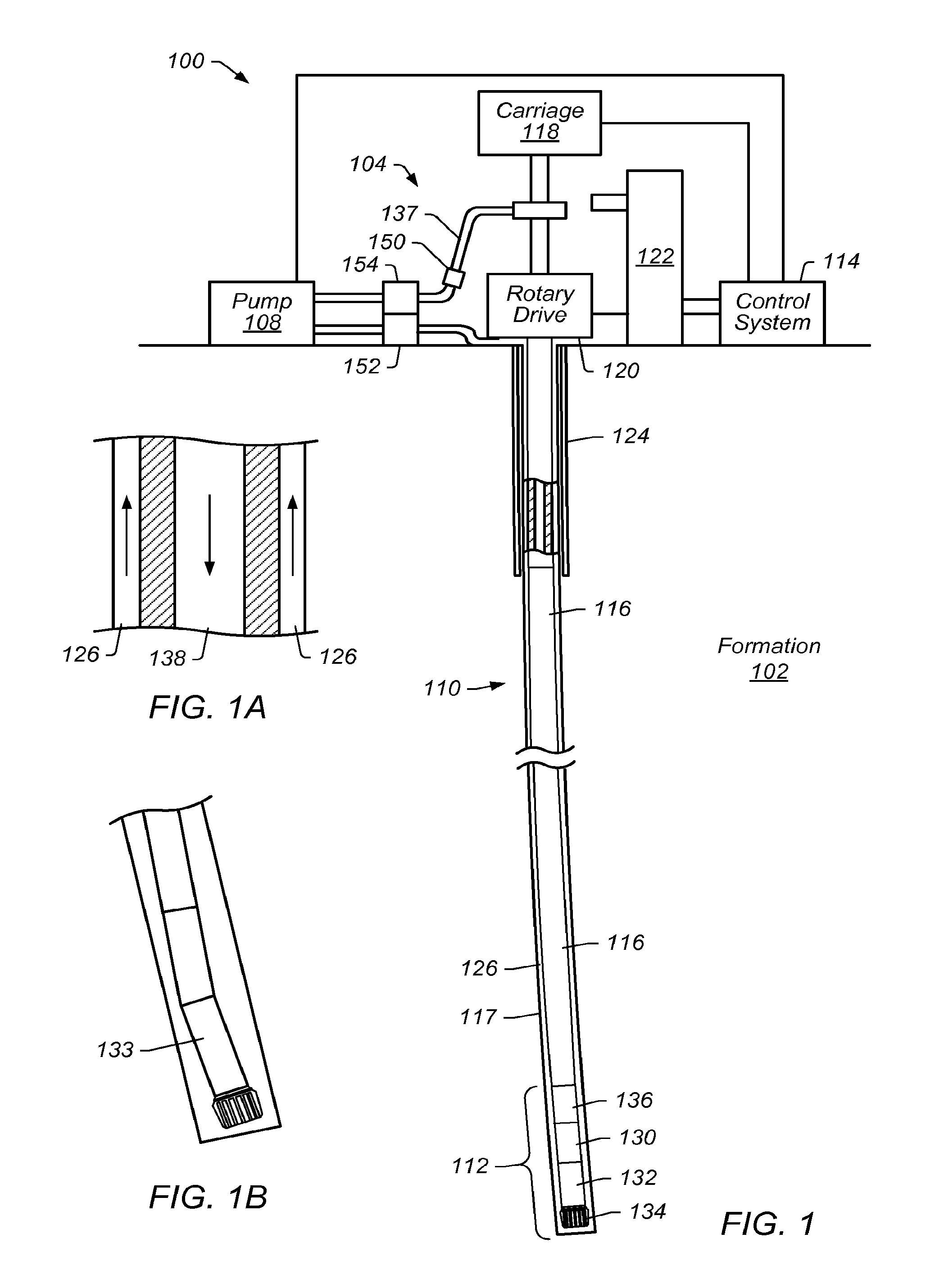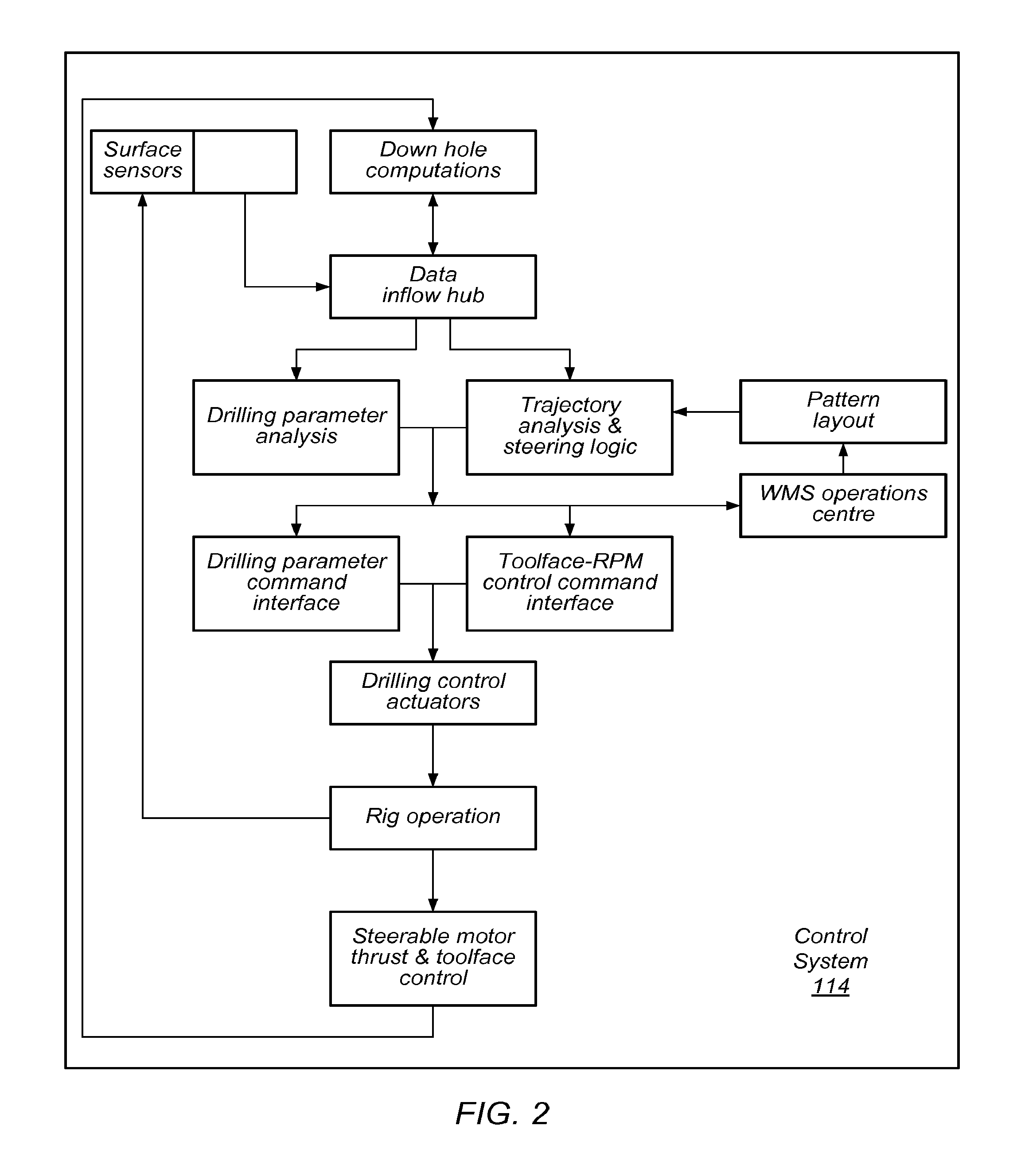Methods and systems for drilling
a drilling method and drilling system technology, applied in the direction of directional drilling, survey, borehole/well accessories, etc., can solve the problems of increasing the cost of drilling a formation, the need for manual control and monitoring, and the inability to repeat drilling performance that relies on manual procedures. to achieve the effect of increasing the flow rate of drilling
- Summary
- Abstract
- Description
- Claims
- Application Information
AI Technical Summary
Benefits of technology
Problems solved by technology
Method used
Image
Examples
example # 1
Example #1
Start Circulating
[0147]A suction meter and a flowline meter are read and assessed for balance. (There may be a slight discrepancy due to fluid temperature, in that the exiting fluid will be warmer therefore possibly slightly lighter.)[0148]Fluid In / Out: 2 m3 / min×1040 kg / m3=2080 kg / min[0149]Inline fluid viscometer may measure at 600, 300, 200, 100, 6 and 3-rpm readings. The collection time may be 1 second at each rpm speed. 6 seconds to process all six readings.[0150]A temperature correction may be made based a “look-up” table.
example # 2
Example #2
Start Drilling
[0151]A mass of rock generated may be based on rate of penetration and hole size. The calculated mass of rock generated may be graphed in real time.[0152]Hole Size @ 311 mm×ROP @ 100 m / hr=7.59 m3 of cuttings excavated / hr[0153](7.59 m3 / hr×2600 kg / m3) / 60 min=329 kg / min[0154]2600 kg / m3 may be an assumed value for the density of cuttings—alternatively, a density log “look-up” table from offset wells can be used to characterize density for each formation[0155]A look-up table may be provided that includes calliper log data from offset wells to increase accuracy.[0156]A look-up table may be provided that includes a washout percentage vs depth from offset wells.[0157]329 kg / min×5% washout=345 kg / min of rock being generated[0158]A washout percentage may be graphed as a separate set of data points[0159]The lag time may be computed based on the time it takes to empty the annulus of mud calculated from the annular volume and flowrate (a “bottoms up” time)[0160]Cuttings s...
example # 3
Example #3
Mass Balance
[0161]The total mass of fluid going into the well and total mass of fluid exiting the well are metered. The total mass of fluid going into the well is subtracting from the total mass of fluid exiting the well. The difference may indicate the mass of drilled cuttings removed from the well.[0162]Fluid In: 2.0 m3 / min×1040 kg / m3=2080 kg / min[0163]Fluid Out: 2.0 m3 / min×1180 kg / m3=2360 kg / min[0164]The difference is 280 kg / min[0165]By subtracting this difference from the actual mass of rock excavated, an indicator is obtained of a theoretical mass of drilled cuttings that has not been removed from the well.[0166]Therefore 345 kg / min−280 kg / min=65 kg / min left in the well
[0167]In an embodiment, flow measurements may be used to set permissives in the control system. For example, a permissive may be set based on whether the flow coming out of the well is equal to flow going into the well within an established tolerance.
[0168]In some embodiments, performance of a mud solids...
PUM
 Login to View More
Login to View More Abstract
Description
Claims
Application Information
 Login to View More
Login to View More - R&D
- Intellectual Property
- Life Sciences
- Materials
- Tech Scout
- Unparalleled Data Quality
- Higher Quality Content
- 60% Fewer Hallucinations
Browse by: Latest US Patents, China's latest patents, Technical Efficacy Thesaurus, Application Domain, Technology Topic, Popular Technical Reports.
© 2025 PatSnap. All rights reserved.Legal|Privacy policy|Modern Slavery Act Transparency Statement|Sitemap|About US| Contact US: help@patsnap.com



